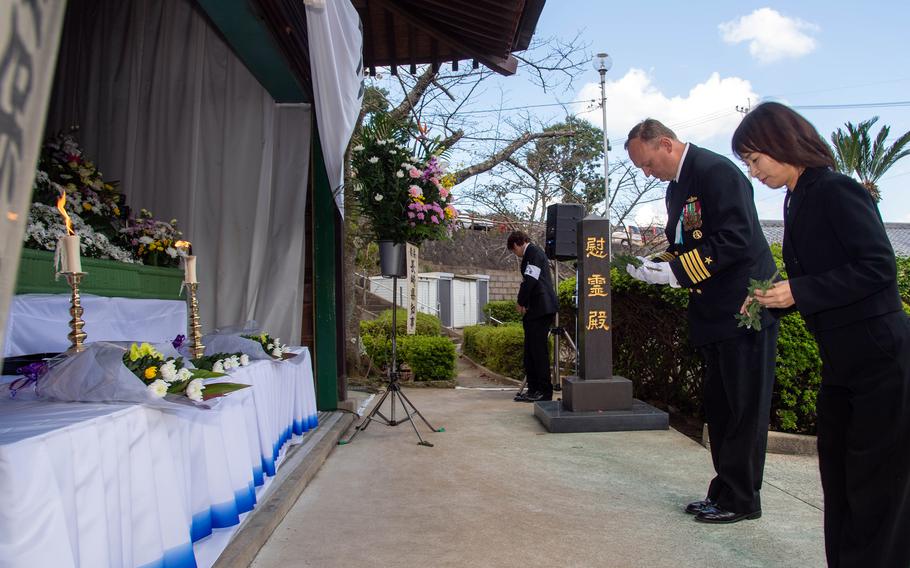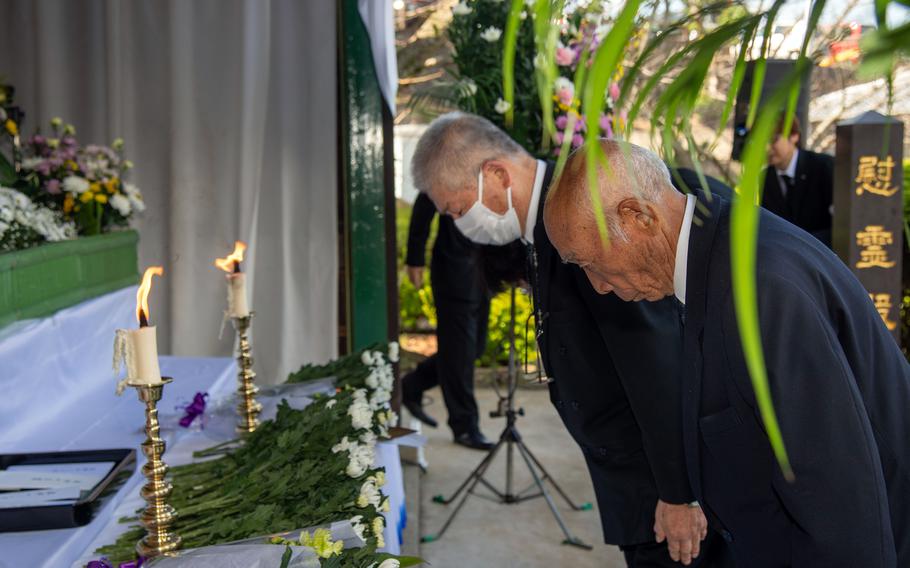Asia-Pacific
US Navy commander honors Japanese troops, civilians killed during World War II
Stars and Stripes November 3, 2023

Capt. Michael Fontaine, commander of Sasebo Naval Base, joins a memorial ceremony at Higashiyama Park Cemetery in Sasebo, Japan, on Oct. 28. The city-hosted ceremony honors Sasebo citizens who died in World War II. (Jasmine Ikusebiala/U.S. Navy)
The commander of Sasebo Naval Base resumed an annual ritual recently by paying respects to the memory of Japanese war dead, including troops who perished in World War II.
Capt. Michael Fontaine joined more than 230 citizens of Sasebo, city officials and members of the Japan Maritime Self-Defense Force at the Oct. 28 ceremony for service members from Sasebo city and the former Sasebo Naval Station. The base was created by Imperial Japan’s army in 1889.
Fontaine bowed and laid flowers at the shrine in Higashiyama Naval Cemetery, where the souls of 170,000 Japanese service members and civilian employees of the naval base are memorialized. The spirits of Maritime Self-Defense Force personnel who died on duty are also enshrined there.
“The ceremony memorialized Sasebo citizens, both military and civilian, who died during the war anywhere, as well as citizens of other regions who lost their lives in air raids while in Sasebo during the war,” base spokesman Aki Nichols said by email on Thursday.

People bow during a memorial ceremony at Higashiyama Park Cemetery on Oct. 28 to honor Sasebo citizens who died in World War II. (Jasmine Ikusebiala/U.S. Navy)
The city of Sasebo was struck by several air raids during WWII; however, much of the city was destroyed on June 29, 1945, by U.S. B-29 Superfortress bombers. Approximately 1,000 people died in the bombing.
The Oct. 28 ceremony took place without attendance limits for the first time since the COVID-19 pandemic, an official in charge of the ceremony told Stars and Stripes by phone Tuesday. It’s customary in Japan for some government officials to speak to media on condition of anonymity.
The cemetery is one of the largest naval cemeteries in Japan, although a few civilians are also interred there. They ended up there because of the confusion at the end of the war, the city official said.
Fontaine in an email to Stars and Stripes on Tuesday said he was honored to participate in the ceremony.
“It is important to commemorate the sacrifices of the citizens who lost their lives in the Pacific War,” he wrote, “and I hope that my participation demonstrated the unity of our two nations today and our commitment to work together towards a peaceful future for our citizens and our regional partners.”
This year marked the 73rd time the ceremony has taken place, the city official said.
Sasebo Naval Base “greatly values our relationship with our host cities and local communities, and ceremonies like this are important opportunities for our senior leaders to stand side by side with their host nation counterparts in a demonstration of friendship, partnership, and alliance,” Nichols said.